Many have come and gone from the arena of Formula 1, but very few automakers have sprayed champaign from the top step of a race win, much less a world championship. Mercedes-AMG has just claimed its sixth consecutive world championship after re-entering the sport nine years ago after a 55 year hiatus. Mercedes’ early success in F1 forshaddowed its dominant return – the Mercedes-Benz team won two F1 world championships in 1954 and 1955 – but few could have predicted it.
In keeping with a time-honoured tradition, Mercedes-AMG set about to celebrate its success in F1 with a flagship sports car – a vehicle so adept at ripping the atmosphere apart with its aerofoils and shredding asphalt with its powertrain that it meets the modern definition of a hypercar.
Just what is Mercedes-AMG’ Project ONE and why does it matter to the brand and automotive world at large?
To the Top
After witnessing Toyota, Jaguar and BMW, among others, leave F1 after failed attempts to clinch the crown (after having invested hundreds of millions of dollars into the effort), some may wonder why Mercedes would have bothered to enter the sport at all. The answer is simple: F1 constitutes the very best in motorsport in every respect. The best drivers in the world are paired with the best, most technologically advanced race cars in the world, riding upon the most advanced tires, treading upon the best built racing circuits, achieving the quickest lap times while its audience consumes the best caviar and libations.
More than a festival of glitz and glamour (though it certainly is that, too), F1 is a bastion of excellence – a platform upon which the world’s most brilliant engineers and scientists can redefine what’s possible upon four wheels. In some way, it’s a place where dreams are formed, and later forged into reality. If you enjoy motorsports, F1 was, is, and probably always will be a stratum of automotive nirvana. (Though, to be fair, excessive fiddling with the rule book has detracted from the sport in recent years; it’s not quite the Mecca of motorsport it once was – but it’s still the best there is, arguably followed by Le Mans prototype and sports car racing, and at least so far as driver talent, rally racing).
Many of the world’s most discerning motorists are familiar with F1, and understand what it represents. Conquering the pinnacle of motorsport still holds cachet for these motorists, building undeniable respect and appeal for the winning marque. Ferrari likely would’ve gone bankrupt decades ago if not for its consistent participation and success in F1; it’s still winning races and its sports cars are still revered as some of the most desirable in the world, and for that, Ferrari can charge grand sums of money for a set of keys.
In short: Mercedes-AMG entered F1 to prove a point – to beat the best, and be the best. It’s achieved that aim, and its Project ONE hypercar takes that achievment and swagger to the street.
What is it?
The Project ONE hypercar is essentially a street-legal Formula 1 car with fenders and a passenger seat. No really. It shares more technology with an F1 car than any other sports or hypercar in the world.
Its powertrain is practically lifted straight from the Mercedes-AMG F1 W10 EQ Power+ race car, ERS (Energy Recovery System) and all. It features the same maniacal, crazed, bat-out-of-hell 1.6-litre V6 as its F1 counterpart, and its chassis takes a stiff carbon-fiber page from the F1 car as well.
Given that it’s still in development, Mercedes-AMG is coy about Project ONE’s peak powerplant output, but we understand its turbocharged V6 will produce around 670 horsepower (with an electric motor assisting to spin-up its turbo), coupled with three electric motors integrated into the drivetrain producing in the neighbourhood of 480 hp for a combined output of roughly 1,150 horsepower.
In isolation that power figure is (staggeringly) not that impressive amongst modern sports cars and hypercars. Bugatti’s Chiron spins out 1,500 hp, Koenigsegg’s Regera produces 1,797 hp – hell, even the Dodge Hellcat makes over 700 horsepower. No, it’s the way the Project ONE makes and deliver sits power that is special, and it’s the car’s exotic approach to weight reduction and vehicle dynamics that will make it a fitting tribute to the marque’s well-stocked trophy case.
How it all works
Mirroring its F1 race car sibling, the AMG Project ONE features a mid-engine layout with its combustion engine placed behind the driver. Two electric motors are integrated into the engine – one on the large, single turbocharger itself, and one on the crankcase, feeding power to the crankshaft and on to the rear wheels. Two additional electric motors are positioned at the front axles, powering the front wheels in carefully metered doses of horsepower and torque (straying here from the F1 recipe, as only the rear wheels are powered in F1).
The V6 engine and bespoke hydaulically actuated 8-speed paddle-shift transmission are stressed members of the chassis, meaning they are effectively part of the chassis, bearing the kinetic forces exerted upon the chassis and, by doing double duty, helping to save weight. This approach to chassis design is also borrowed from F1 and other forms of motorsport, as is the carbon-fibre monocoque.
What is a Monocoque?
The chassis itself aligns very closely with a Formula 1 car, utilizing a monocoque design. What is a monocoque? Think insect, wherein the outer shell of the creature is effectively the skeletal structure – there is no interal spine or framework – just slimy guts and a nervous system. In a F1 car, what you see is the chassis, paint, stickers and all – it’s hollow inside, just like a cricket. By making the body the chassis, significant weight savings can be realized, and efficient packaging of the powerplant, cooling system, electrical system and computers can be achieved. Monocoques aren’t new, but they are impressive, and extremely exotic.
This Isn’t Your Grandmother’s V6
When you think of a 1.6-liter V6, you may not find your pulse quickening. You may be thinking, “yeah, my Grandma’s Camry has a V6.” Technically, yes, that is correct. But the Project ONE’s V6 has about as much in common with a Camry’s V6 as a civil war era canon ball has in common with a hellfire missle.
It revs. No, not as high as the AMG F1 car, but it revs to heaven, or as close as we’ll ever get this side of the grass. Mercedes-AMG states a redline of 11,000 rpm, which we suspect is a touch conservative, as the production vehicle’s engine will likely rev even higher – say, 12,000 rpm. As a knee-dragging superbike addict, I find this particular figure very seductive. Spinning an engine beyond 10,000 rpm is magical, transcending a precipice of sanity that most motorists never cross.
At these revolutions, engines start to sing – nay, scream at the top of their lungs, belting out pleasing, triumphant mechanical melodies. To rev a turbocharged engine over 10,000 rpm is a touch insane, in all the right ways. Every trip to the rev-limiter will be an occasion worth celebrating in the Project ONE. The fortunate few customers who will take delivery of this hypercar have much to look forward to. We sincerely hope they don’t seal their copies up in glass cases. This beast deserves to be spanked, hard, at a racetrack. It’s just not designed to be a garage queen.
The aforementioned stratospheric revs are made possible by four over-head camshafts driven by spur gears, and pneumatically actuated valves, since valve springs couldn’t keep up in the drivetrain (limiting revs due to “valve float”).
Clever integration of the electric motor onto the turbocharger eliminates turbo lag while enhancing the efficiency of both turbines. Typical turbos house the exhuast and intake turbines in the same housing – not so with the AMG Project ONE turbo (or any modern turbo F1 engine), wherein the exhaust turbine is placed directly beside the exaust valves with very short headers, reducing the distance exhuast gases have to travel (and the thermal loss along the way), thus spooling the exhaust turbine with immediacy.
The intake turbine is directly connected to the exhaust turbine via a turbo shaft, as in any other turbo, but thanks to its lengthy span across the engine, the intake turbine is also placed very close to the intake valves, which also serves to reduce lag and dramatically enhance engine response.
An electric motor is directly connected to the turbo shaft, positioned between the two turbines, sufficiently protected from the extreme heat of the exhaust turbine, but fully capable of spinning up the turbo when exhaust gas flow is insufficient to generate the amount of intake charge required for quick throttle response and power demands at low rpm, or when reving from idle.
This turbo-mounted electric motor can generate approximately 120 horsepower (90 kW) and is capable of spinning the V6’s single turbo up to 100,000 rpm.
The result is an engine that responds, according to Mercedes-AMG, “faster than a naturally aspirated V8 engine.” Wrap your brain around that statement. We can’t imagine what this throttle response feels like, but we’d love to experience it.
This e-turbo serves another purpose, capturing waste energy from the turbo and generating electicity with it.
This electricity can then be fed directly to the 160 horsepower (120 kW) electric motor attached to the crankshaft via a spur gear, doing its part to accelerate the vehicle when warp-speed is beckoned via the floor-mounted throttle-pedal, or stored in the high-voltage lithium-ionbattery pack for later use.
Again, let this sink in: total horsepower from the 1.6-liter V6 is estimated to be around 670 hp – that’s a specific output of roughly 418 hp/liter! For reference, the gold standard is roughly 100 hp/liter.
All-wheel-drive?
Yes, kind of. The two 160 horse (120 kW) electric motors positioned at each front axle can feed power, or induce drag on the wheels according to finely-tuned parameters, thereby allowing for torque vectoring and somewhat magical, if sythesized, handling dynamics.
Mercedes-AMG says that 80 percent of braking energy can be captured and sent to the battery pack for recuperation under relaxed driving conditions. This energy is stored in the battery and is available to extend the vehicle’s electric range. So vast is the wizardry of these electric motors that they are each controlled by their own power electronics unit. These compact computers are housed in the floor assembly near the front axles, located in close proximity to the electric motors they control.
Speaking of revs, these front-axle electric motors rev up to 50,000 rpm, which is substantially quicker than the 20,000 rpm limit of most high-performance electric motors. We imagine they sound pretty cool too, when fully unleashed.
Efficient is Fast
It may be true that efficiency is not synonomous with sex appeal or excitement, but in the world of race car powertrains, efficient is fast. It boils down to maximum propulsion from every drop of gasoline. When you look at it in those terms, efficiency is critical as it separates great race cars from F1 Championship winning race cars. And, clearly, Mercedes-AMG has this bit figured out.
The automaker says the powertrain housed in its Project ONE will achieve over 40 percent thermal efficiency, which is unprecedented in a street-legal engine (the most efficient modern internal combusion engines struggle to manage between 33 and 38 percent thermodynamic efficiency, even in meek, gutless 3- and 4-cylinder engines tuned for fuel economy). Through its fiercly efficent extraction of power from every drop of fuel, the Project ONE will prove both fast and frugal.
Sneak Attack Mode
In the mood for a sneak attack? The Project ONE land-missile will be able to silently travel approximately 25 kilometers on pure electric power before engaging its rabid V6. We imagine future owners of the Project ONE have plenty of property separating them from their neighbours, but in case they want to sneak away without waking the baby, 25 km of e-drive should get the barking exhaust sufficiently far from ear-shot.
It’s Quick
AMG’s forthcoming hypercar will be capable of leaping from standstill to 200 km/h in less than 6 seconds. That is very Formula 1 car-like. In fact, that’s violent acceleration. Elderly owners ought not attempt max acceleration runs without first consulting their physician. Jay Leno will need to wear a neck brace. This is vertebrae-straining acceleration.
A 0-60 time has yet to be stated, but we’re confident it will be under 3.0 seconds – probably under 2.6 seconds.
The potent powertrain contained within can propel the Project ONE to a terminal velocity “over 350 km/h (217 mph). Paint us impressed.
Nice Batteries
Mercedes-AMG says the battery pack cells, their arrangement, and the battery cooling system on the Project ONE are “the same as used in the Mercedes-AMG Petronas Formula 1 racing car.” These batteries are practically lifted from an alien space ship, and they represent the very best in battery technology in 2019.
The battery pack will be larger than the one fitted to the F1 car, thereby allowing for more practical daily use, with greater electric driving assist.
In a nod to F1 innovation, the high-voltage electrical system will operate at 800 volts instead of 400 volts, thereby allowing for significantly thinner electrical cables to deliver the power, reducing weight and saving space in the process.
Driving Modes to Match Your Mood
The Project ONE hypercar will feature several drive modes, ranging from a relaxed electric mode to a slightly terrifying “Race Start Function,” which conjures every amp and horse to propel you and yours to infinity and beyond, instantly. We reckon it will be rather fun to experiment with these settings.
The Suspension
Again borrowing from Formula 1, the Project ONE will feature multi-link adjustable coil-over suspension front and rear. The push-rod spring struts have been mounted horizontally, preventing rolling movements during hard cornering and rapid changes of direction, without requiring stiff settings that punish the driver and passenger.
Active Aero
Quality time was spent honing the Project ONE’s exterior surfaces, borrowing from Mercedes-AMG’s F1 development prowess to put super-computers, computational fluid dynamics and real-world wind tunnels to good use. Mercedes-AMG was committed to producing a car with next-level track performance, and as a result, the decision was made to equip the vehicle with active aero.
Aerodynamicists have installed a front splitter that automatically extends to increase downforce for improved cornering speeds, or retracts to decrease drag, thereby improving acceleration and elevating the vehicle’s top speed. The front wheel arches incorporate active ventilation louvres, which work on-the-fly to achieve ideal aerobalance.
At the rear, a two-section diffuser (once an edgy F1 appendage, now finding its way onto a street car) increases air velocity to reduce pressure and increase downforce. A two-stage extendible rear aerofoil also serves to increase downforce on demand. The added downforce enhances stability under hard braking, and improves cornering speeds in tandem with the front-end active splitter. A central exhaust tailpipe mirrors F1 design norms, and looks sharp in the process.
In a novel tip of the hat to its F1 race car cousin, the Project ONE also sports a vertical shark fin, which serves to enhance lateral stability when cornering at neck-straining speeds. We love this design detail as it looks pure race car, and gives this vehicle a striking semblance to the F1 cars it’s celebrating.
A roof-mounted air intake sits in “clean air” above the car, isolated from turbulance introduced by the front end of the vehicle. Again, this detail is pure race car, paying homage to the F1 designs which have earned AMG its numerous F1 championship titles. The air intake snorkel elegantly morphs into the shark fin before disappearing into the rear deck of the body. This section looks great in photos, and we imagine it will induce palpitations and a drool reflex in person.
The rippled rear glass allows for a full view of the power unit as it guides airflow to the rear spoiler.
Finally, two large NACA ducts guide air toward engine and transmission oil coolers which are situated under the rear deck.
Reinventing the Wheel
Even the wheels were subject to radical design, utilizing a 10-spoke layout. Each rim is forged from high-strength aluminium, featuring a centre lock for rapid tire changes at the track.
Radial carbon-fibre semi-covers are utilized to enhance the wheel’s aerodynamics at speed, reducing drag, while triple-spoke vents pull air from the wheel well through the brake rotors, helping to cool the brakes while assisting the underbody aero to generate downforce.
The wheels measure 10.0 x 19, wrapped in 285/35 ZR 19 Michelin Pilot Sport Cup 2 tires at the front while 12.0 x 20 wheels with 335/30 ZR 20 tires reside at the rear; Michelin worked with Mercedes-AMG to develop a custom-tailored Pilot Sport for this hypercar.
These wheels are exclusively reserved for the Mercedes-AMG Project ONE, so, unfortunately, you won’t be able to bolt a set onto your AMG GT.
As for the cost of tire replacement – if you have to ask…
Hot and Cold But Not Luke-Warm
“The Mercedes-AMG Project ONE is the hottest and coolest car we have ever designed. It combines our design philosophy of Sensual Purity with the performance of our Formula 1 racing cars and is the perfect embodiment of Performance Luxury,” says Gorden Wagener, Chief Design Officer, Daimler AG.
“This hypercar’s extreme design marks a milestone in design,” concluded Wagener.
“The Mercedes-AMG Project ONE is the first Formula 1 car with MOT approval,” adds Ola Källenius says, Member of the Daimler AG Board of Management.
“It takes your breath away.”
Tobias Moers Weighs In
“[This] hypercar is the most ambitious project we have ever undertaken. It marks yet another pinnacle of the successful, strategic development of Mercedes-AMG towards a performance and sports car brand. Project ONE raises the bar in terms of what is currently technologically feasible and thanks to its combination of efficiency and performance it represents an absolute benchmark. At the same time, Project ONE provides an outlook on how AMG will define driving performance in the future,” said Tobias Moers, Head of Management at Mercedes-AMG GmbH.
Availability & Pricing
Perfection, as they say, requires patience. Mercedes-AMG have been hard at work on this hypercar for some time, and it’s not clear exactly when it will launch into production. Our guess is that it will launch in full production form at the Frankfurt Motor Show in 2020, but it may show up some months after that.
Unfortunately for any well-heeled hot-shoe who wants one, all 275 copies destined for production have already been sold. Each copy called for $2.72 million USD at the till. As far as we can tell, that’s a relative hypercar bargain, with values likely to appreciate.
Conclusion:
To summarize, the Project ONE hypercar is more than a design exercise. It’s a tribute to the sweat, tears, and bloody knuckles the Mercedes-AMG team endured to build a Formula 1 car from scratch, and race it to six successive F1 Championship victories. It’s a symbol of success, after defeating the best race teams in the world. It’s a work of art and a high watermark for science and engineering in the 21stcentury. It’s a manifestation of what’s possible when limits are lifted. Someday it will be hailed as a tour de force that bridges both the end and the beginning of an automotive era.
[Photo credit: Mercedes-AMG]
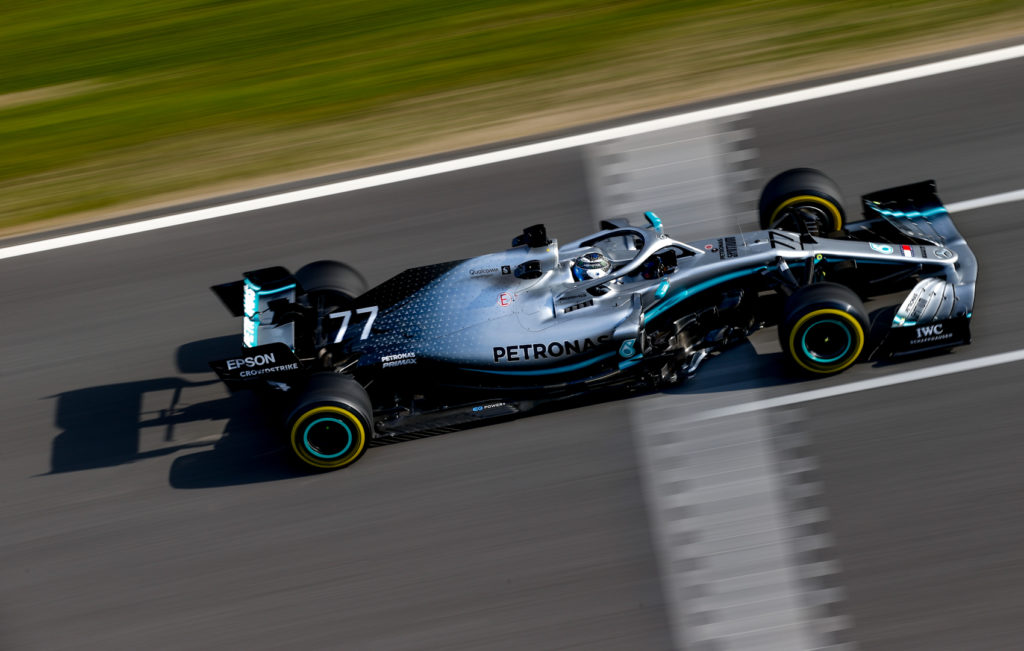
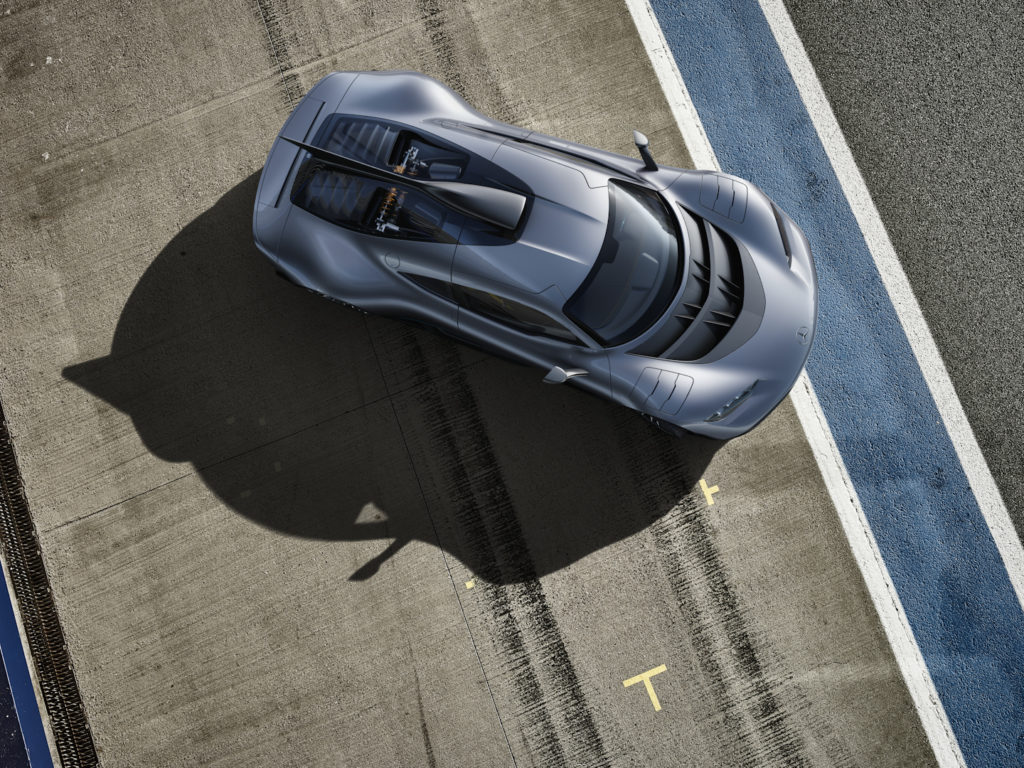
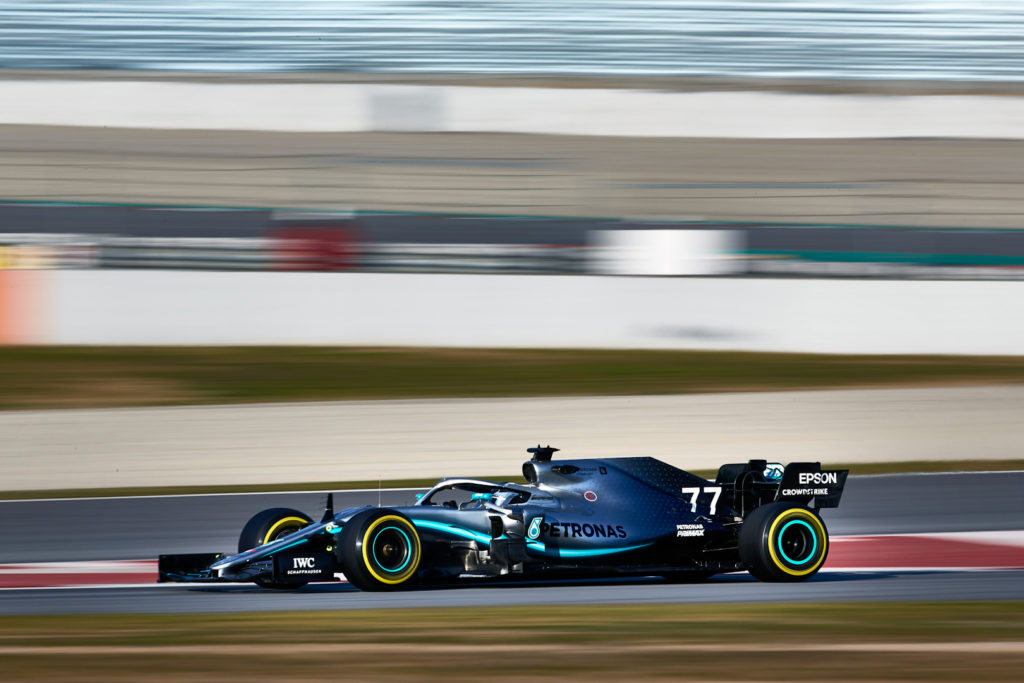
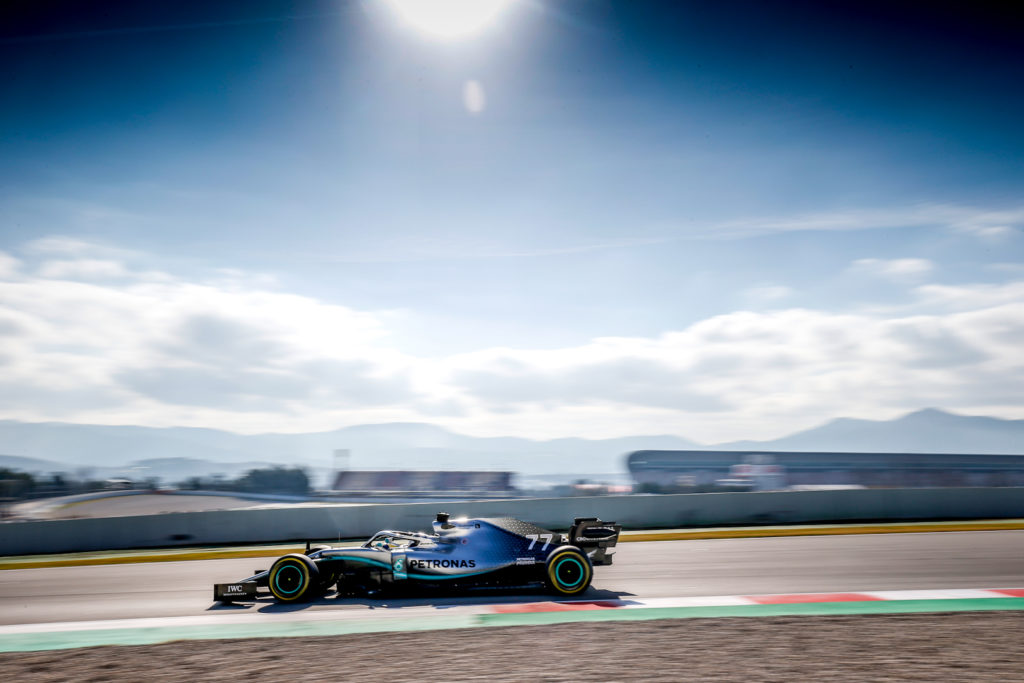


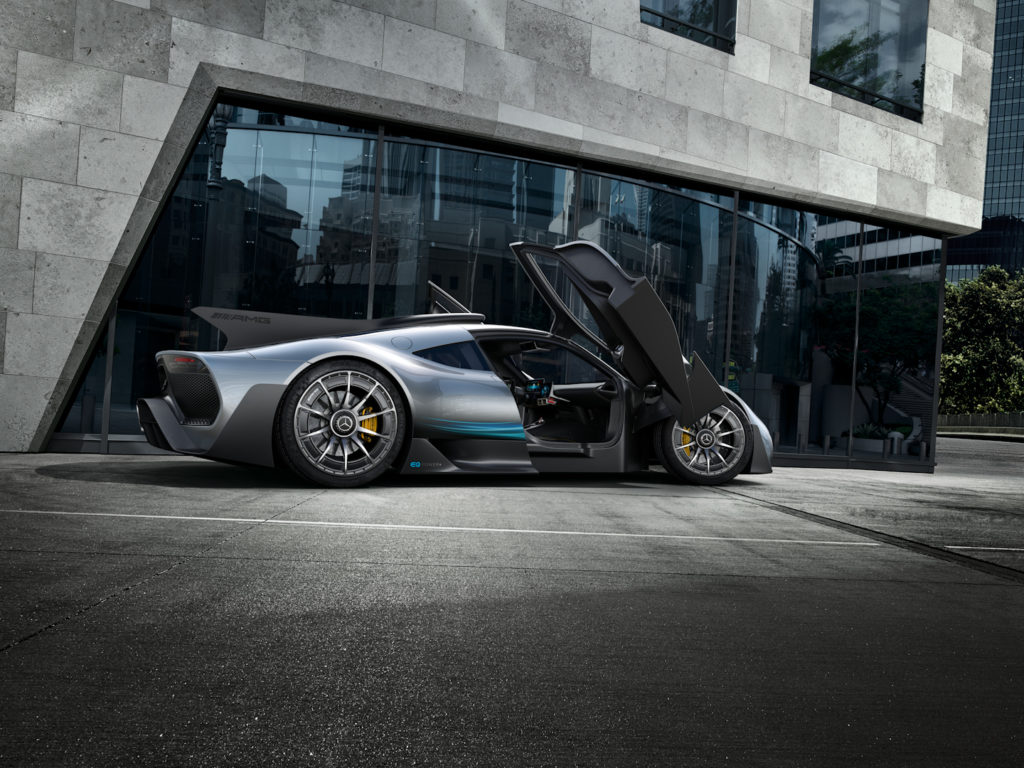
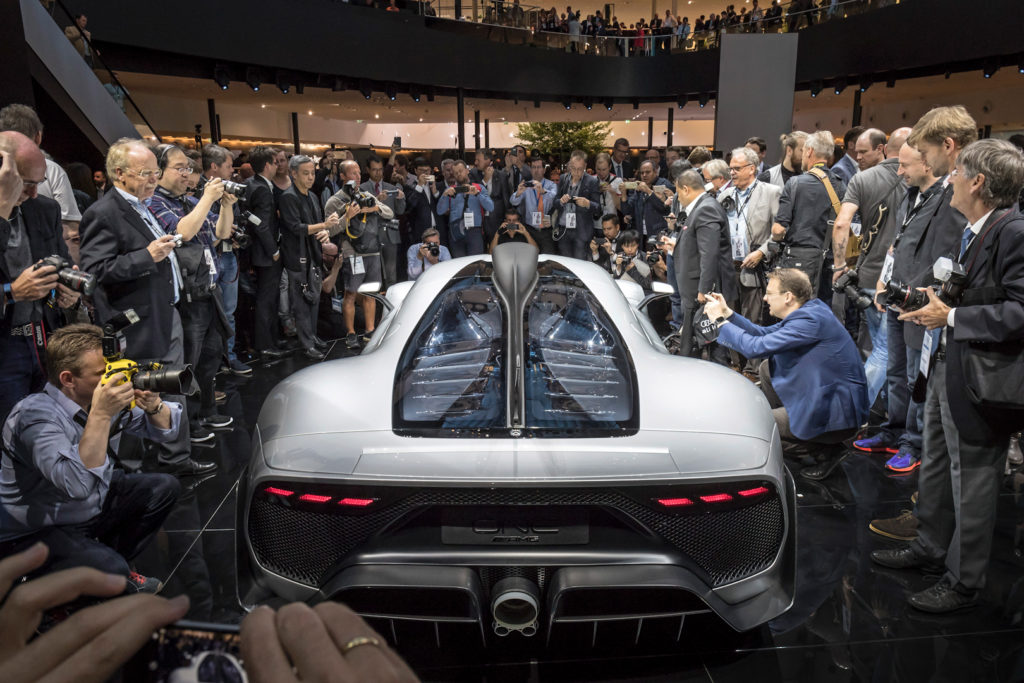
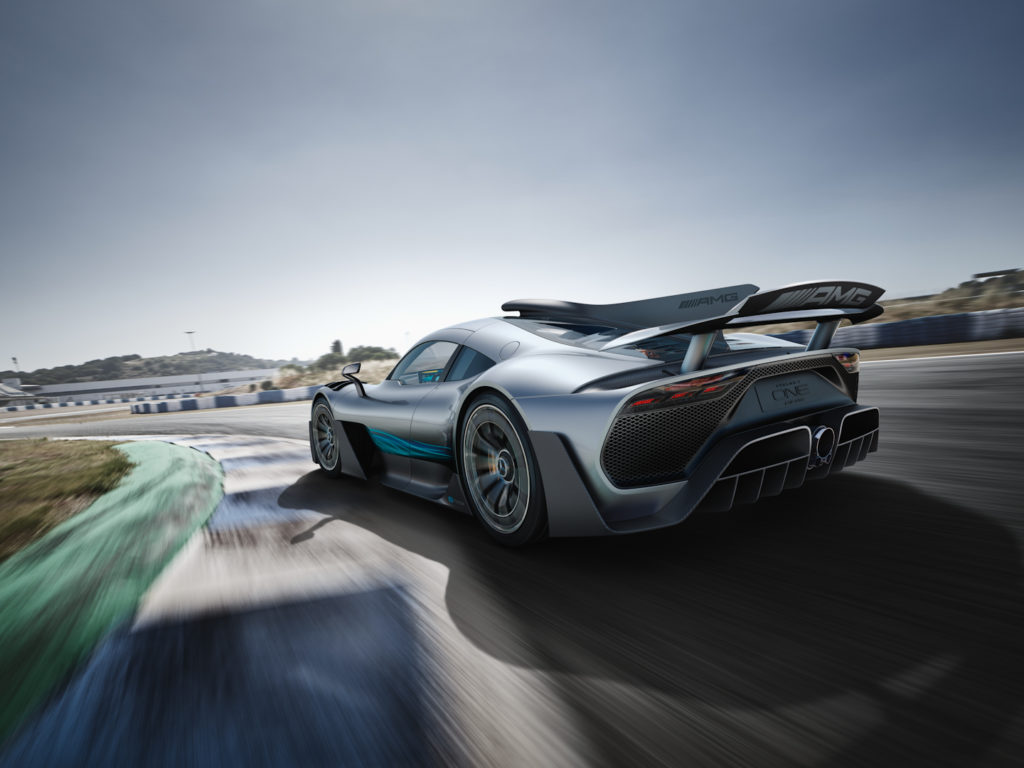
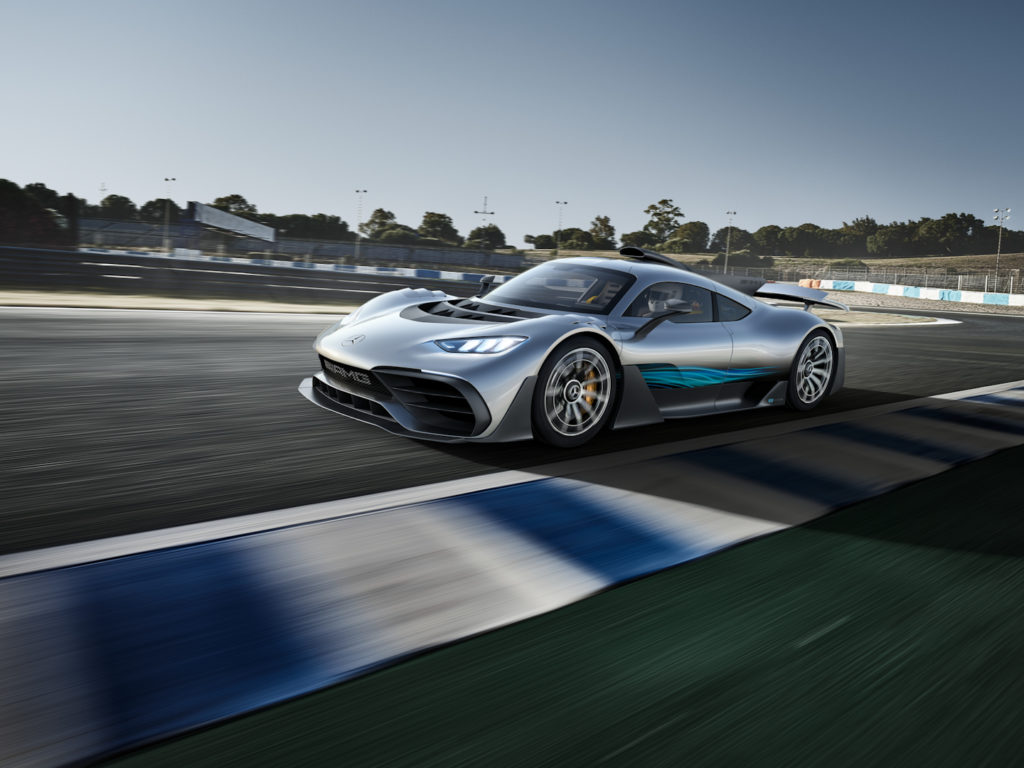
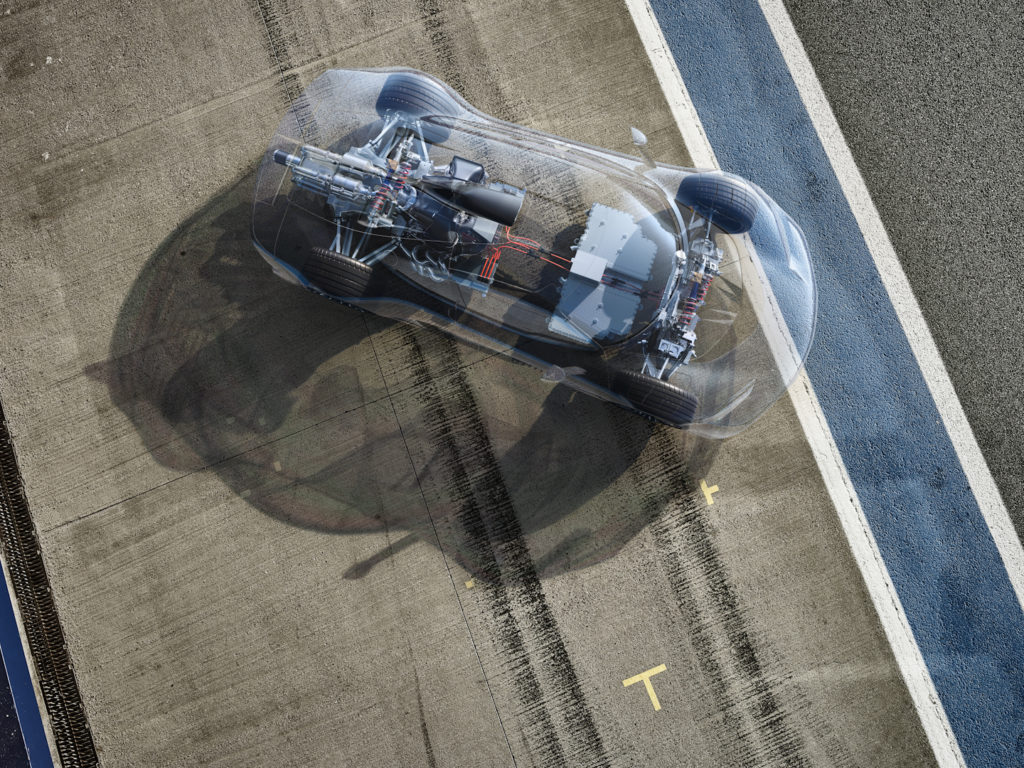
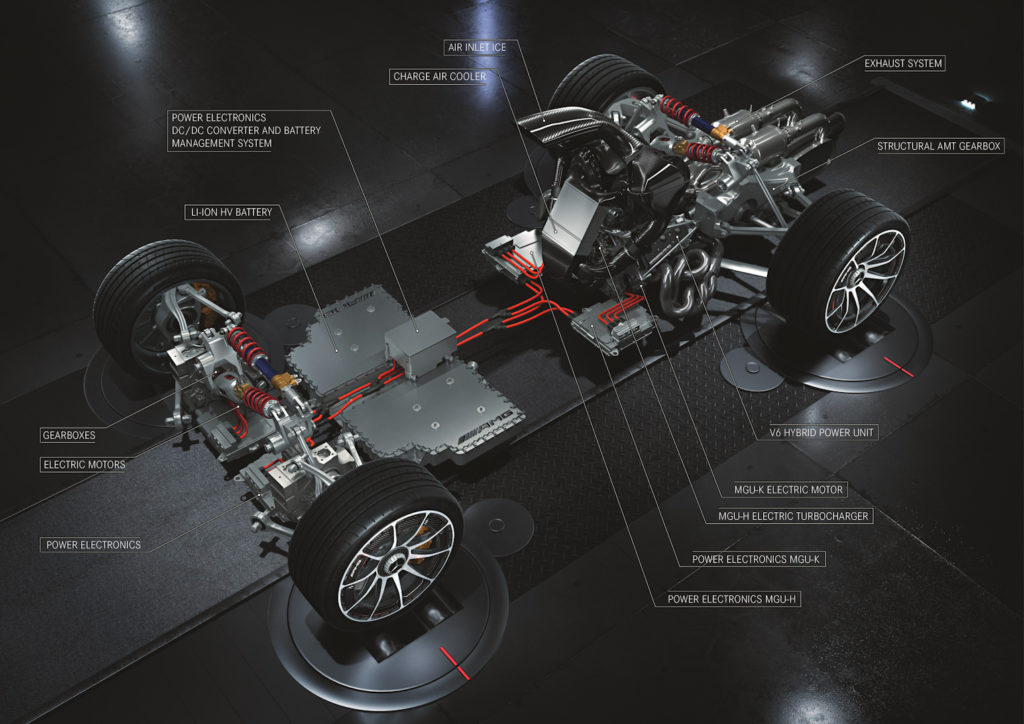
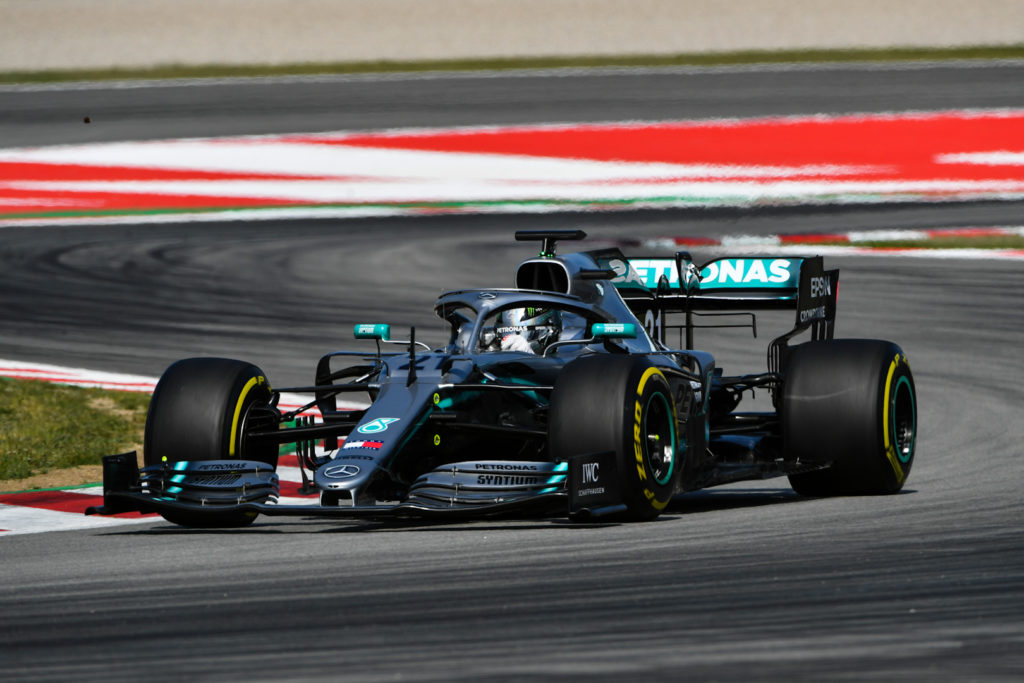
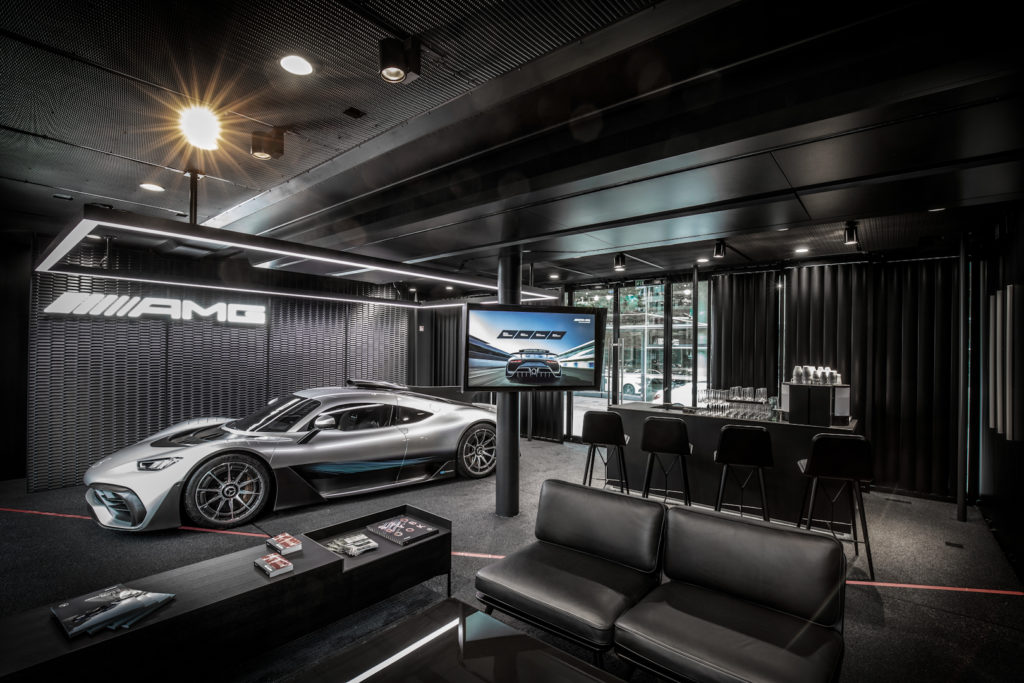
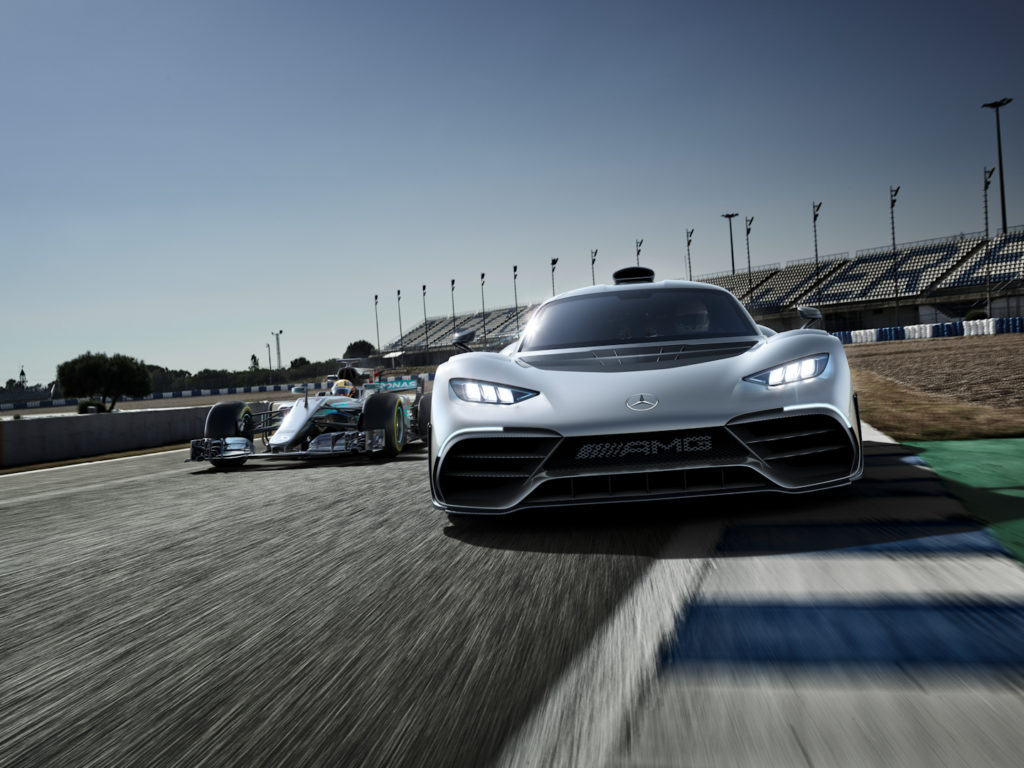
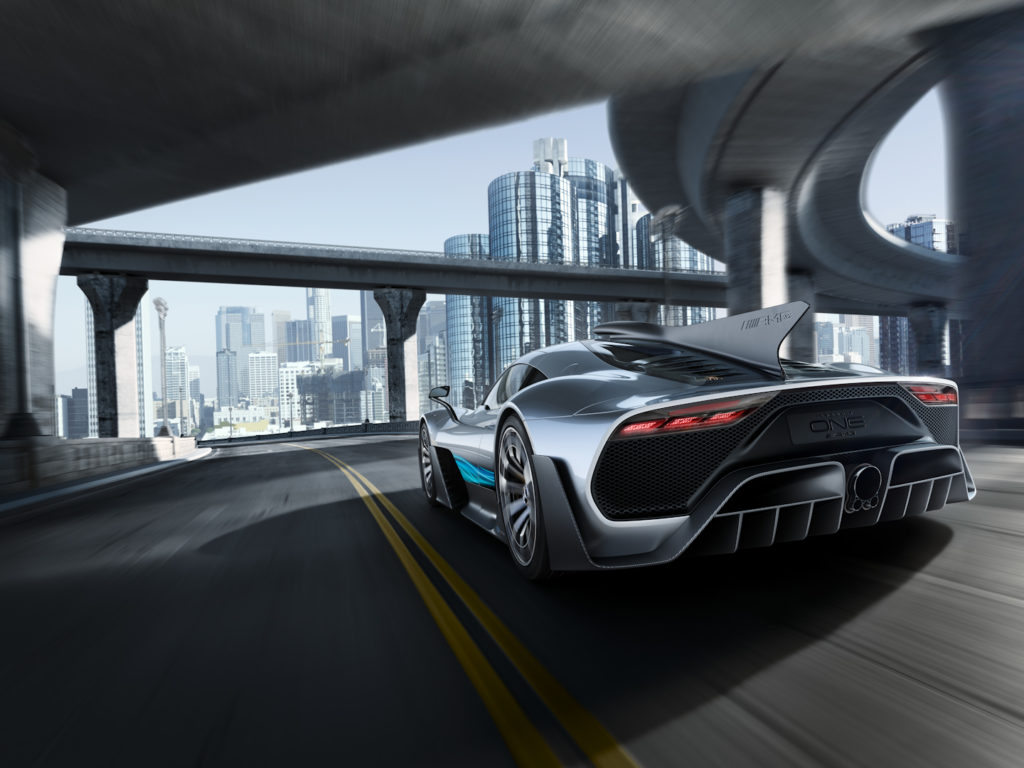
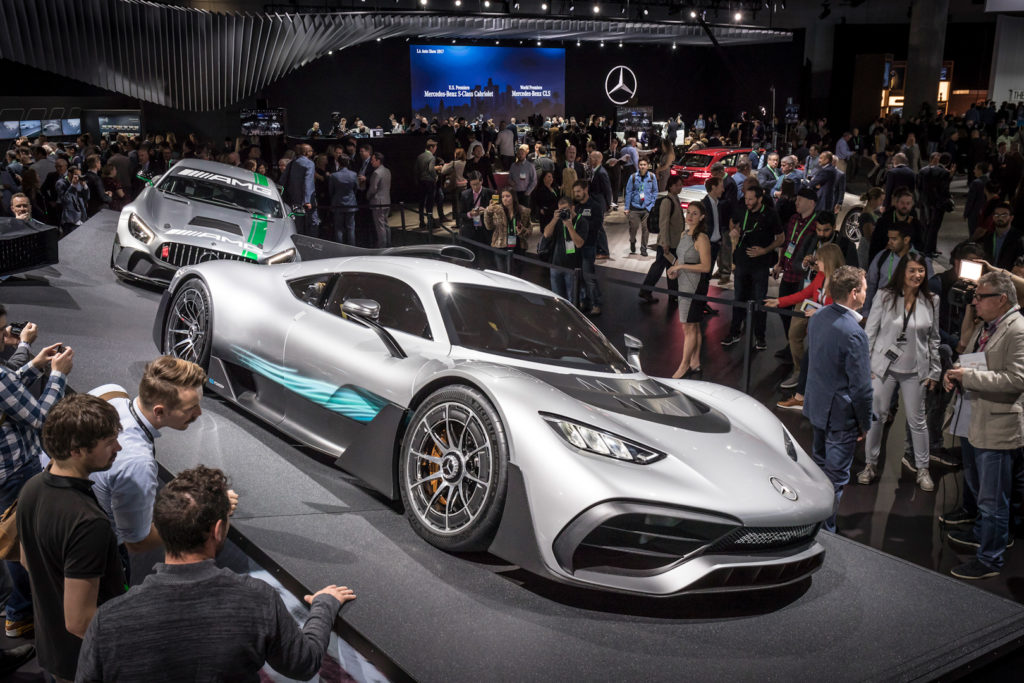
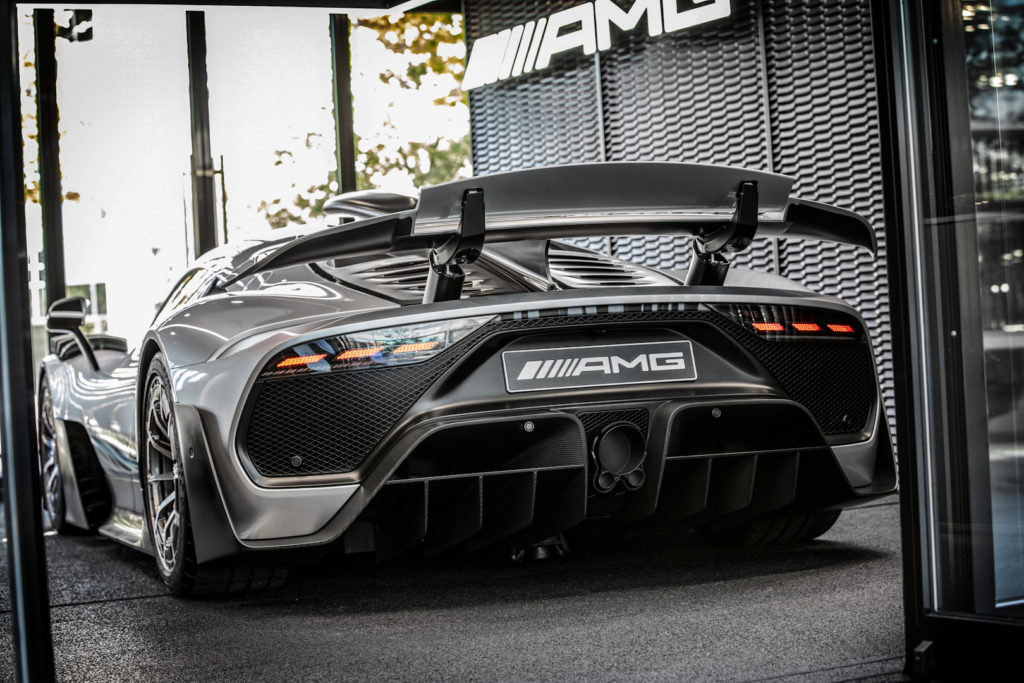
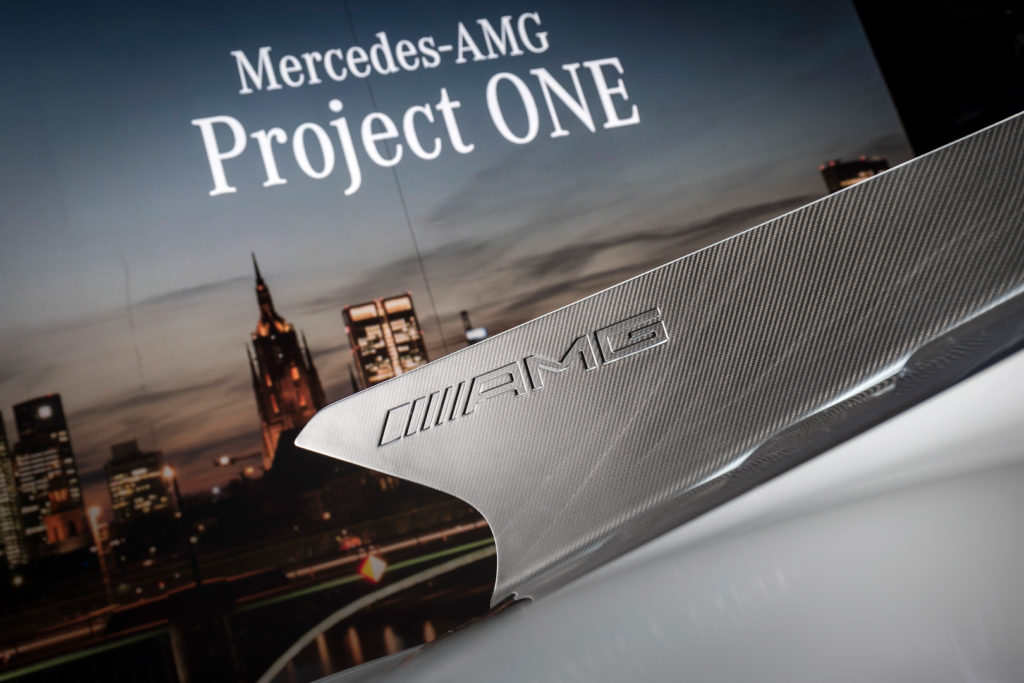

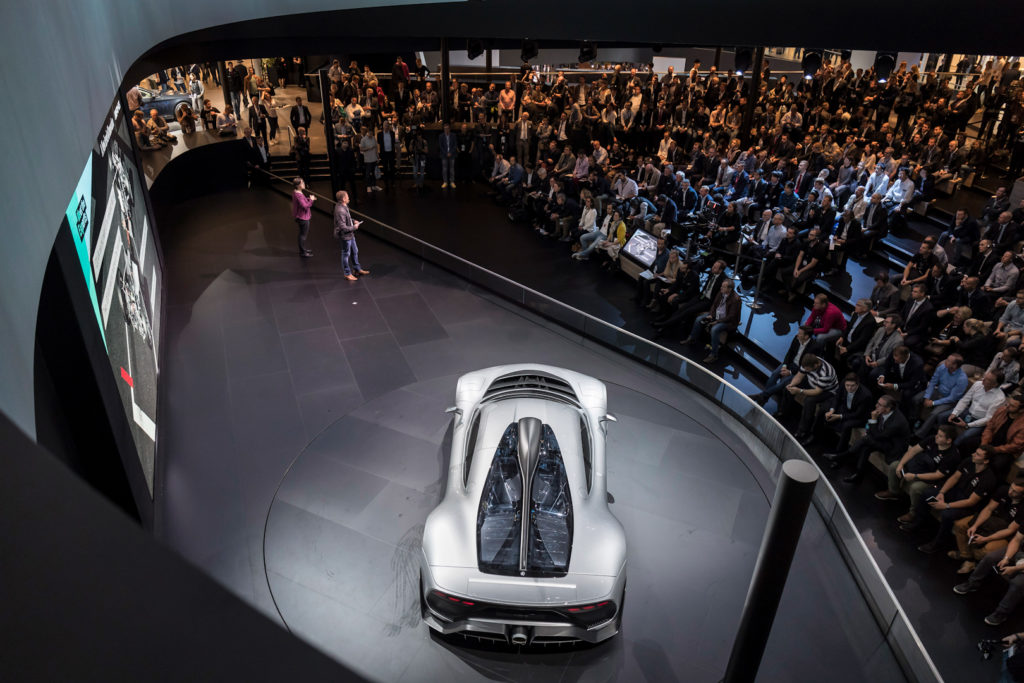
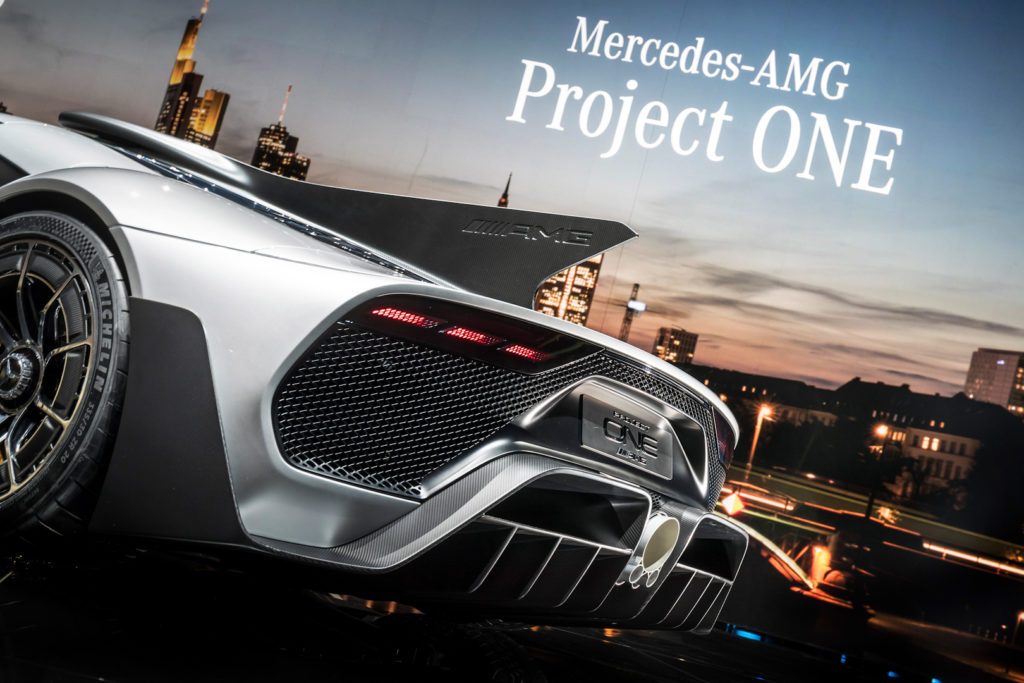
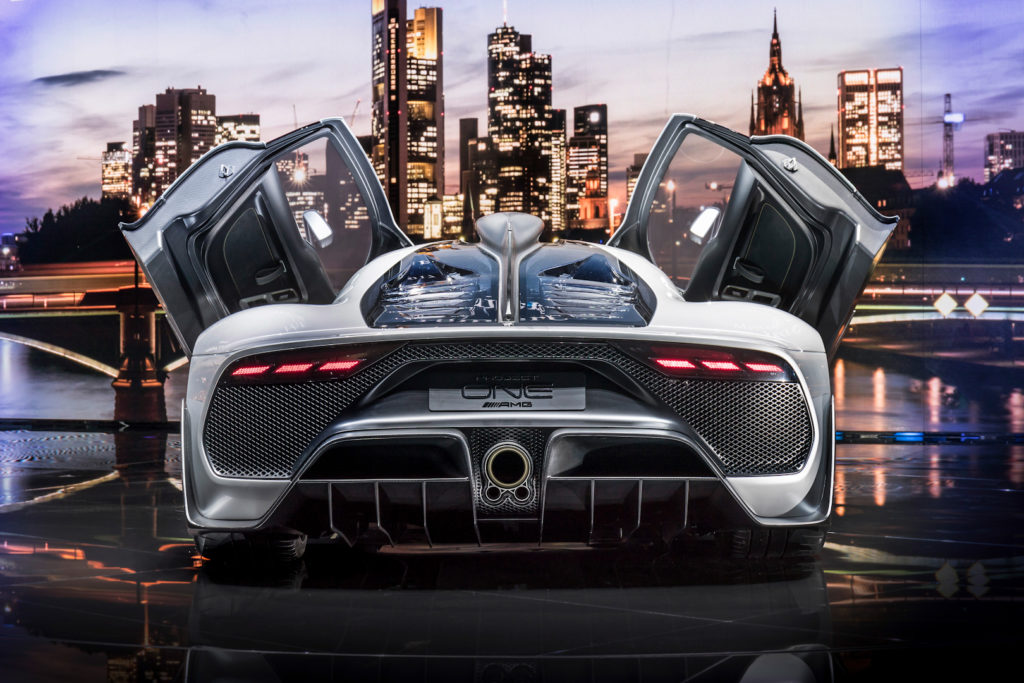
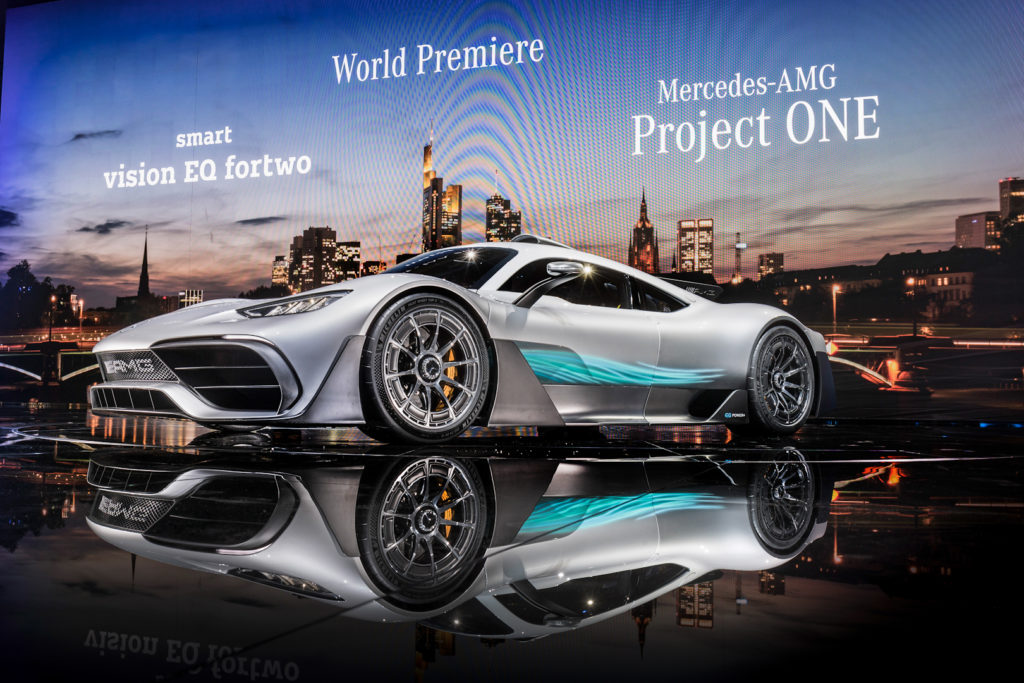
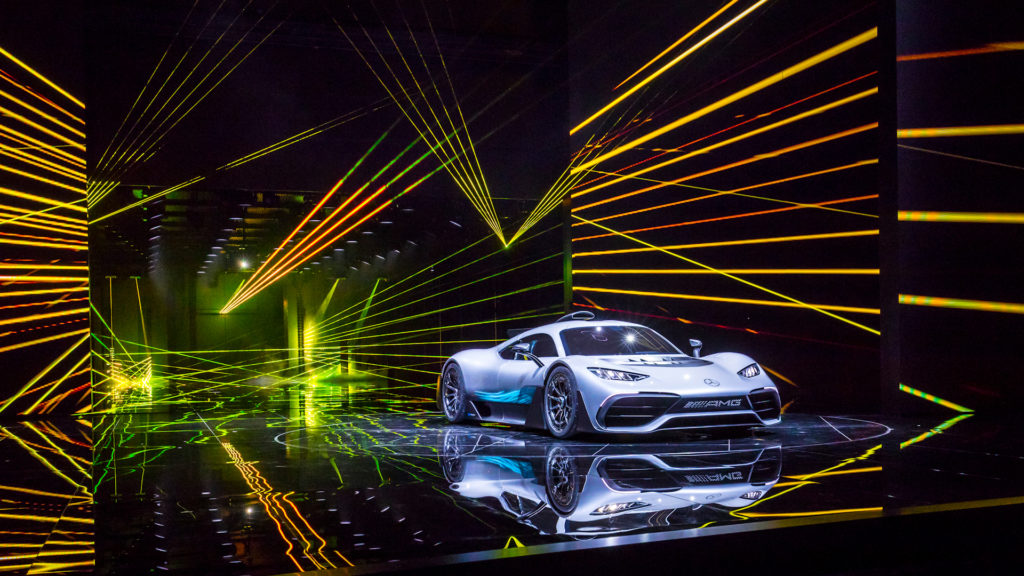





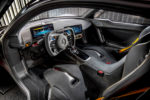






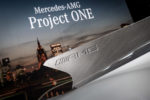






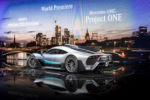

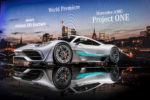

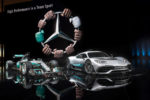




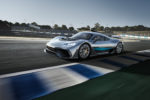










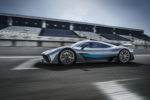

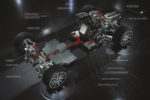



Comment